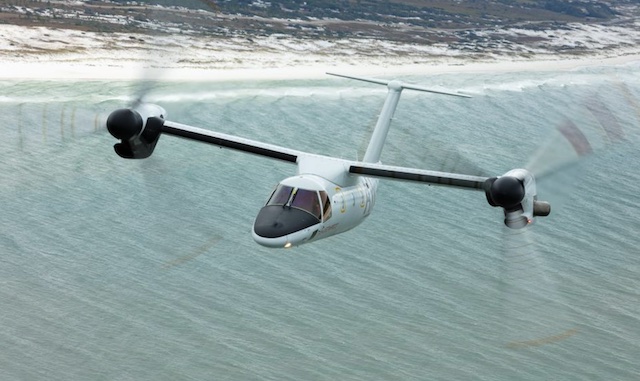AW609
Summary
| Category | Military Helicopters |
| Origin country | 🇮🇹 Italy • 🇺🇸 United States |
| Manufacturer | AgustaWestland |
| First flight | 6 March 2003 |
| Year introduced | 2020 |
| Number produced | units |
| Average unit price | $25 million |
Description
The AW609's development began in 1996 as a collaboration between Bell and Boeing to create a civil tiltrotor aircraft, drawing upon experience gained from Bell's XV-15 program. Boeing withdrew in 1998, leading Agusta to join the effort, which resulted in the formation of the Bell/Agusta Aerospace Company (BAAC) joint venture. The aircraft was initially designated Bell-Agusta AB-609. The fundamental objective was to integrate the vertical takeoff and landing capabilities of a helicopter with the higher speed and extended range typical of a fixed-wing aircraft. Program development progression experienced changes, including limitations in funding from both partners which affected flight testing pace. In 2009, Finmeccanica authorized AgustaWestland to acquire Bell's interest. By 2011, AgustaWestland had assumed full ownership, redesignating the aircraft the "AW609," although Bell remained involved in component design and certification activities. Ground tests commenced in December 2002. The first flight occurred on March 7, 2003, in Arlington, Texas. The first successful in-flight conversion from helicopter to airplane mode was conducted on July 22, 2005. Initial certification projections for 2007 were subsequently delayed, with later targets set for 2011 and then 2016.
The AW609 is configured as a tiltrotor aircraft, effectively blending the vertical flight capabilities of a helicopter with the increased speed and range characteristic of fixed-wing platforms. Its exterior configuration bears an outward similarity to the V-22 Osprey, distinguishing itself through the incorporation of a pressurized cabin. The airframe is substantially constructed using composite materials. The aircraft features slightly forward-swept wings spanning 34 feet, equipped with flaperon control surfaces. Stability in airplane mode is provided by a high-mounted vertical stabilizer at the rear of the fuselage, which does not include a conventional rudder. Power is generated by two Pratt & Whitney Canada PT6C-67A turboshaft engines. The flight control system utilizes a triple-redundant digital fly-by-wire architecture, supplemented by a head-up display and Full Authority Digital Engine Controls (FADEC). The cockpit is designed to support single-pilot operation under instrument flight rules, featuring touchscreen interfaces and controls structured to facilitate the transition for pilots with helicopter experience. Integrated avionics consist of the Rockwell Collins Pro Line 21 suite, incorporating capabilities such as GPS, TCAS, and weather radar. The airframe is rated for a maximum internal payload capacity of 5,500 lb (2,500 kg).
As the AW609 has not yet entered service, its operational history is presently limited to developmental testing and demonstration flights. AgustaWestland has proposed that a variant optimized for short takeoff and vertical landing (STOVL) could present an appealing option for search and rescue (SAR) and maritime operators. The Italian government has indicated an interest in acquiring several AW609 aircraft specifically for coastal patrol missions. An agreement with Bristow Helicopters focuses on developing dedicated configurations for offshore oil and gas personnel transport and search and rescue roles. These configurations are intended to enable point-to-point operations, allowing personnel transport to offshore platforms directly from major population centers, potentially enhancing operational flexibility and safety margins. Discussions have also included the potential development of versions for military utility, medical evacuation (medevac), or expanded search and rescue capabilities.
Main Variants:
-
BA609: The initial designation assigned to the civil tiltrotor aircraft developed as a joint venture between Bell Helicopter and AgustaWestland.
-
AW609 (Higher Weight Variant): A projected variant with a specified maximum takeoff weight of 17,500 pounds, characterized by a trade-off in vertical takeoff performance for an increase in payload capacity.
-
AW609 (Search and Rescue): A dedicated configuration currently in development with Bristow Helicopters tailored specifically for search and rescue missions.
-
AW609 (Offshore Oil and Gas Transport): A dedicated configuration currently in development with Bristow Helicopters optimized for the transport of personnel to offshore installations.
-
AW609 (Military version): A potential variant under discussion encompassing capabilities for medical evacuation, search and rescue, and troop transport.
Technical specifications
| Version: AW609 | |
|---|---|
| Maximum speed | 509 km/h (316 mph) |
| Wingspan | 11.7 m (38.4 ft) |
| Height | 5.1 m (16.7 ft) |
| Length | 14.1 m (46.3 ft) |
| Service ceiling | 7,620 m (25,000 ft) |
| Empty weight | 4,755 kg (10,483 lbs) |
| Max. takeoff weight | 8,200 kg (18,078 lbs) |
| Climb rate | 7.6 m/s (24.9 ft/s) |
| Powerplant | 2 x turboprops Pratt & Whitney Canada PT6C-67A delivering 1447 kW each |
Current operating countries
| Country | Units | ||
|---|---|---|---|

|
United Arab Emirates | 0 (+3) | |
All operators
